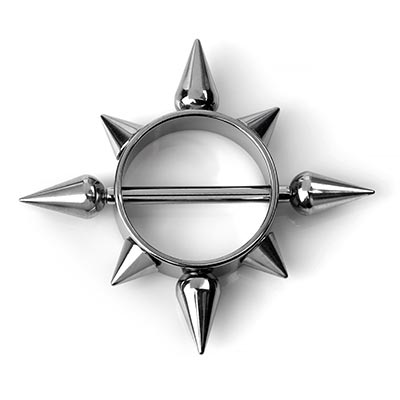Introduction
Nipple piercing has a long history that spans across different cultures and eras. It has been practiced for both aesthetic and ritualistic reasons, and today it remains a popular form of self-expression. In this guide, we will explore the different types of nipple piercing jewelry, how to care for your piercing, the risks involved, and much more.
Historical Background
Nipple piercing has been documented as far back as ancient civilizations. In some cultures, it was a rite of passage or a symbol of status. For example, in ancient Rome, it is believed that soldiers pierced their nipples to signify strength and bravery. In modern times, nipple piercings have become a way for individuals to express their identity and style.
Types of Nipple Piercing Jewelry
There is a wide variety of jewelry designed specifically for nipple piercings. Choosing the right type of jewelry is crucial for comfort, healing, and aesthetics. Here are some of the most popular options:
- Barbells: These are straight or curved bars with decorative ends, often used during the initial healing period due to their stability.
- Rings: Circular or captive bead rings that can encircle the nipple, offering a more dynamic and flexible look.
- Shields and Caps: These are decorative pieces that cover the nipple, usually worn with a barbell. They come in various intricate designs.
- Clickers: These are rings that can easily be clicked into place, providing security while being easy to change out.
Choosing the Right Jewelry
When selecting nipple piercing jewelry, it’s important to consider the material, size, and design. High-quality materials like titanium or surgical steel are recommended to reduce the risk of irritation or allergic reactions. The size of the jewelry should match your anatomy to ensure comfort and proper healing.
Aftercare and Healing
Proper aftercare is essential to prevent infections and ensure your nipple piercing heals correctly. Here are some tips for aftercare:
- Clean the piercing with a saline solution twice daily to keep it free of bacteria.
- Avoid touching the piercing with dirty hands to reduce the risk of infection.
- Wear loose-fitting clothing to minimize friction and irritation on the piercing.
- Avoid submerging the piercing in water, such as swimming pools, until it is fully healed.
Risks and Considerations
While nipple piercing is generally safe when performed by a professional, there are risks to be aware of. These include:
- Infection: Poor hygiene or improper aftercare can lead to infections, which may require medical treatment.
- Rejection: In some cases, the body may reject the piercing, leading to migration or the jewelry being pushed out.
- Allergic Reactions: Some people may experience allergic reactions to certain metals used in the jewelry.
- Scarring: Improper healing or trauma to the piercing can result in scarring.
The Piercing Process
The process of getting a nipple piercing typically involves the following steps:
- Consultation: A professional piercer will discuss your options, the procedure, and aftercare requirements.
- Preparation: The area will be cleaned, and the piercing location will be marked.
- Piercing: A sterile needle is used to pierce the nipple, followed by the insertion of the jewelry.
- Aftercare Instructions: The piercer will provide detailed aftercare instructions to ensure proper healing.
Personal Experiences and Testimonials
Many people find nipple piercings to be a unique and empowering form of body modification. Here are some testimonials from individuals who have undergone the procedure:
Sarah: “Getting my nipple piercing was a personal journey. It was a little painful, but the results were worth it. I love the way it looks, and it has definitely boosted my confidence.”
Mark: “I was nervous at first, but my piercer made the process easy and comfortable. The aftercare was straightforward, and now I can’t imagine not having it.”
Frequently Asked Questions
Q: How long does it take for a nipple piercing to heal?
A: Healing times can vary, but generally, it takes between 6 to 12 months for a nipple piercing to fully heal. Consistent aftercare is key to ensuring a smooth healing process.
Q: Can I breastfeed with a nipple piercing?
A: Yes, you can breastfeed with a nipple piercing, but it’s recommended to remove the jewelry during breastfeeding to avoid any risk of the baby swallowing it or causing discomfort.
Q: Does getting a nipple piercing hurt?
A: Pain levels vary from person to person, but most people describe the pain as a quick, sharp pinch. The discomfort usually subsides quickly, and proper aftercare can minimize any lingering soreness.
Conclusion
Nipple piercing jewelry offers a distinctive and stylish way to express yourself. Whether you’re drawn to the aesthetic appeal, the empowerment, or the personal significance, it’s important to be informed about the process, the risks, and the aftercare. With the right information and care, a nipple piercing can be a rewarding and fulfilling addition to your body art.
